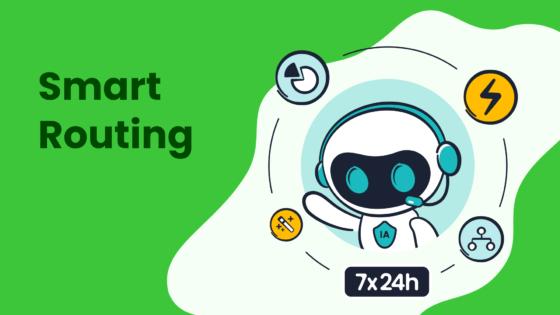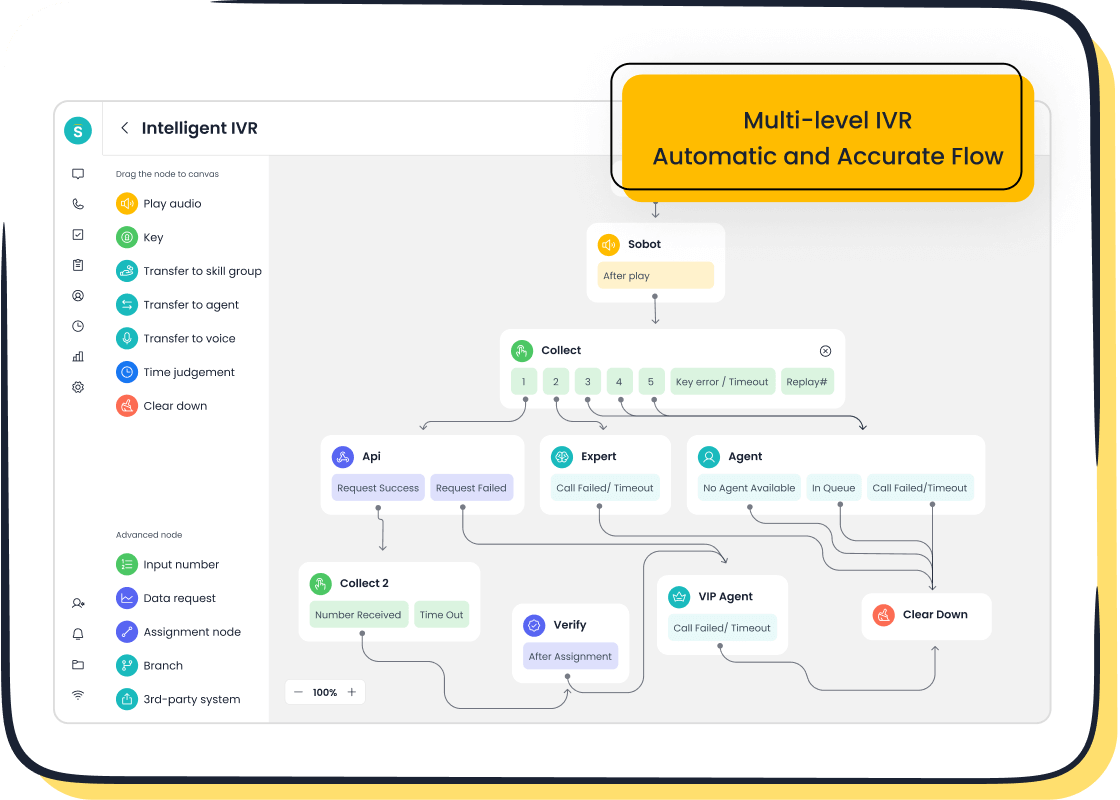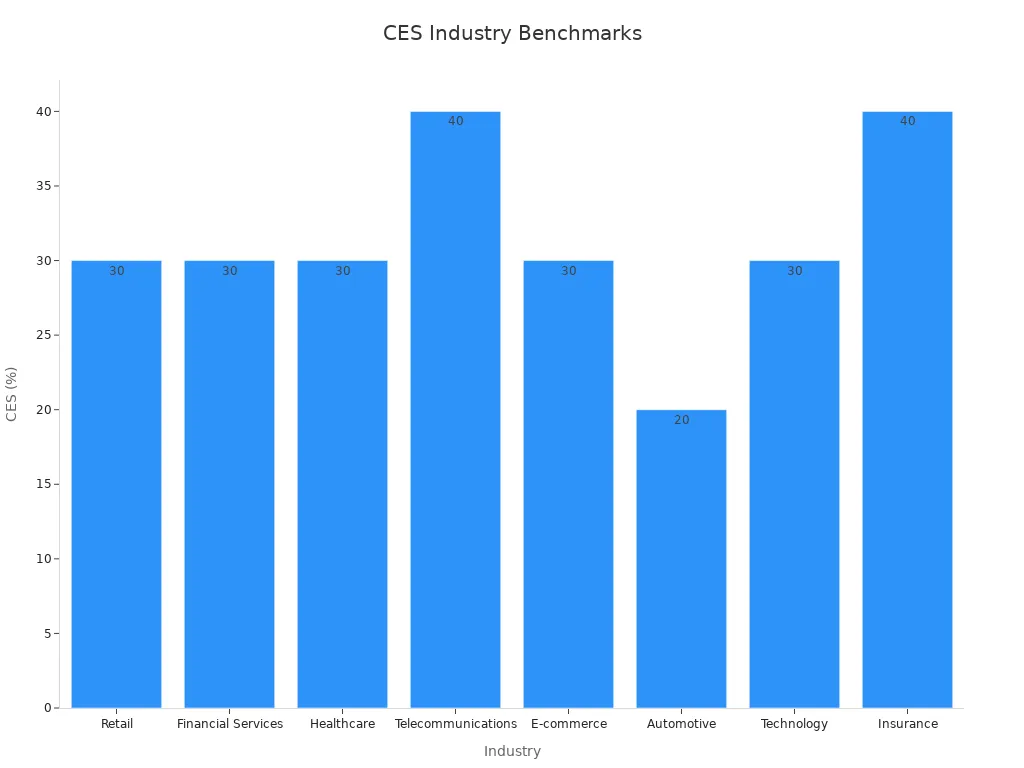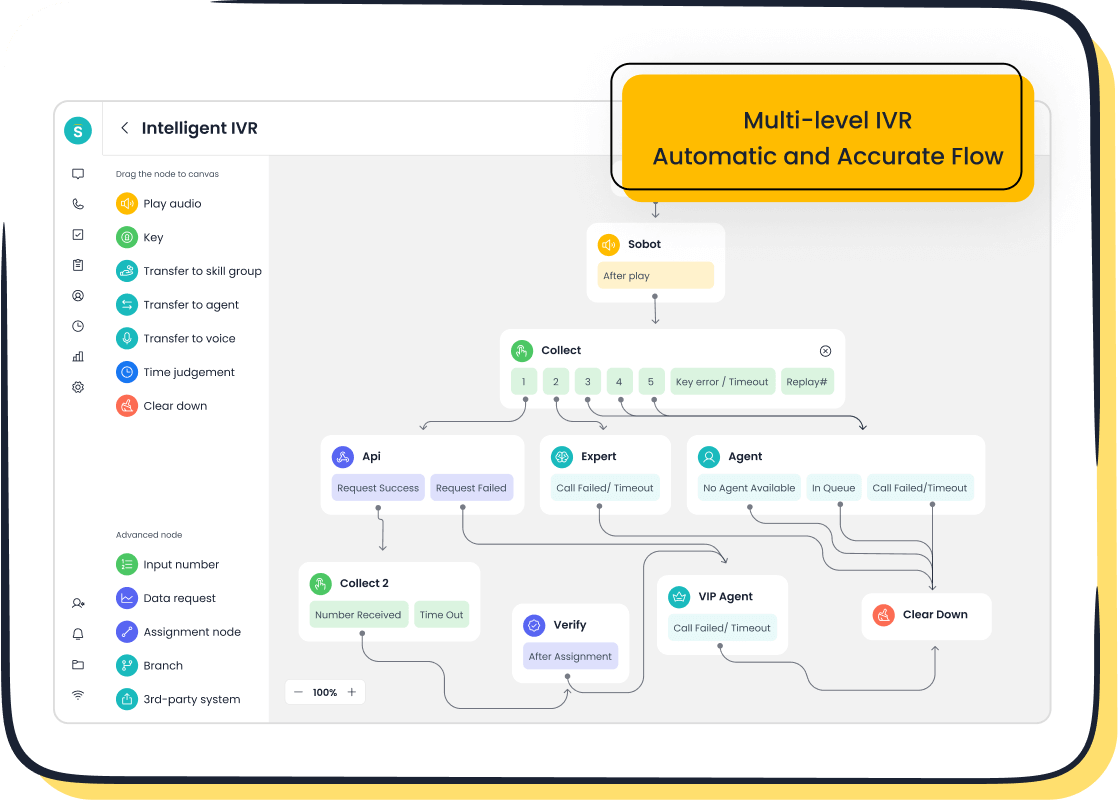What Is Customer Effort Score and Why It Matters in 2025

Customer Effort Score (CES) measures how simple it is for you to achieve your goals when interacting with a business. It focuses on effort rather than satisfaction, helping companies understand whether their processes make your experience seamless. In 2025, CES takes center stage in customer experience, as businesses realize that reducing effort directly boosts loyalty. For example, nearly 94% of customers who report low effort say they’ll buy again, while 88% plan to spend more. Sobot’s solutions, like its omnichannel platform, simplify customer engagement by integrating channels and automating tasks, ensuring you can interact effortlessly. With Sobot, understanding what is the customer effort score becomes essential for enhancing customer satisfaction and loyalty.
What Is the Customer Effort Score (CES)?

Definition and Purpose of CES
Customer Effort Score (CES) is a customer experience metric that measures how easy it is for you to interact with a business. Whether you’re resolving an issue, making a purchase, or seeking support, CES evaluates the effort you put into these interactions. Unlike other metrics that focus on satisfaction or loyalty, CES zeroes in on the simplicity of your experience.
The concept of CES emerged in 2010, introduced by the Corporate Executive Board. It gained prominence when the Harvard Business Review highlighted its importance in reducing friction during customer interactions. Research shows that minimizing effort is key to building loyalty. For instance, 96% of customers who face high-effort experiences are likely to become disloyal, while only 9% of those with low-effort experiences feel the same. By identifying pain points in your journey, CES helps businesses streamline processes and improve your overall experience.
How CES Differs from Metrics Like NPS and CSAT
You might wonder how CES compares to other customer experience metrics like Net Promoter Score (NPS) and Customer Satisfaction Score (CSAT). While all three measure aspects of customer sentiment, they focus on different areas:
- NPS: This metric gauges your overall loyalty to a brand. It asks whether you would recommend the company to others, reflecting your long-term relationship with the brand.
- CSAT: This score measures how satisfied you feel about a specific interaction or product. It captures your immediate emotional response.
- CES: In contrast, CES focuses on the ease of your interaction. It evaluates whether the process was simple and hassle-free, rather than how satisfied or loyal you feel.
A Gartner study found that effort is the strongest driver of customer loyalty. For example, 94% of customers who report low effort say they intend to repurchase, compared to just 4% of those who experience high effort. This makes CES a powerful tool for businesses aiming to enhance your experience during specific interactions.
Why CES Focuses on Effort Over Satisfaction
You may think satisfaction is the ultimate goal, but CES takes a different approach. It prioritizes effort because research shows that reducing friction in your interactions has a greater impact on loyalty than simply making you happy.
For instance, 91% of customers who experience minimal effort are likely to return to the company. On the other hand, 96% of dissatisfied customers who face high effort are likely to leave and never come back. By focusing on effort, CES helps businesses identify and eliminate barriers that frustrate you. This not only improves your experience but also reduces service costs and churn rates.
In essence, CES recognizes that satisfaction is fleeting, but ease of interaction builds lasting relationships. When businesses make your journey effortless, they create a foundation for loyalty and trust.
Why Customer Effort Score Matters
CES and Customer Loyalty
Customer loyalty depends on how easy it is for you to interact with a business. CES plays a crucial role in fostering this loyalty by identifying and reducing barriers in your journey. When businesses prioritize minimizing effort, they create smoother experiences that encourage you to return.
Studies confirm this connection between effort and loyalty. For example:
- A Harvard Business Review study found that 94% of customers who reported low effort were likely to repurchase.
- The same study revealed that 81% of customers who experienced high effort spoke negatively about the company.
- Gartner research showed that 96% of customers with high-effort experiences reported disloyalty, while only 9% of those with low-effort experiences did.
These findings highlight the importance of CES in building lasting relationships. By reducing effort, businesses not only improve your experience but also strengthen your trust and commitment to their brand.
Reducing Customer Churn with CES Insights
Customer churn often stems from frustrating experiences. CES provides valuable insights into these pain points, helping businesses address them effectively. When your interactions require less effort, you’re more likely to stay loyal and avoid switching to competitors.
High customer effort leads to dissatisfaction and churn. For instance, customers who face complex processes or repetitive questions often feel frustrated. CES helps businesses pinpoint these issues and streamline their operations. By simplifying workflows and automating repetitive tasks, companies can reduce churn rates and improve customer satisfaction.
Sobot’s solutions, such as its omnichannel platform, exemplify this approach. By integrating communication channels and automating tasks, Sobot ensures you can interact effortlessly. This not only enhances your experience but also reduces the likelihood of churn, making CES a vital tool for retaining customers.
Predicting Customer Behavior Through CES
CES doesn’t just measure effort; it also predicts your behavior. By analyzing CES data trends, businesses can anticipate how you’ll respond to their services. This predictive power enables companies to make informed decisions that improve your experience and loyalty.
Consider the following data trends:
| Customer Effort Level | Customer Loyalty (%) | Customer Disloyalty (%) |
|---|---|---|
| High Effort | 4% | 96% |
| Low Effort | 94% | 9% |
These insights reveal a clear pattern. High effort correlates with poor experiences and reduced loyalty, while low effort leads to higher retention rates. CES allows businesses to identify these trends and take proactive steps to enhance your journey.
For example, Sobot’s AI-powered Voicebot uses CES data to predict your needs and provide personalized support. By reducing effort, it ensures you have a seamless experience, fostering loyalty and satisfaction. CES isn’t just a metric; it’s a powerful tool for understanding and shaping customer behavior.
How Customer Effort Score Is Measured
Types of CES Surveys and Questions
To measure customer effort score effectively, businesses rely on CES surveys. These surveys typically ask a single question designed to evaluate how easy it was for you to complete a specific interaction. Common customer effort score questions include:
- "How easy was it to resolve your issue today?"
- "The company made it easy for me to handle my request. Do you agree?"
These questions use a scale, often ranging from 1 (very difficult) to 7 (very easy), to capture your experience. This approach ensures clarity and simplicity, making it easier for you to provide accurate feedback.
Businesses use different methodologies to analyze CES survey results:
- Simple Percentage Calculation: Subtract the percentage of "Difficult" responses from "Easy" responses to calculate the overall CES.
- 1 to 7 Scale: Average scores are calculated for better accuracy, allowing businesses to identify trends and patterns.
- Band of Acceptable Scores: A range, such as 5+ out of 7, defines success rates and highlights areas for improvement.
These methods help businesses understand your effort level and identify opportunities to enhance your experience.
Timing and Methods for Collecting CES Data
Timing plays a crucial role in CES surveys. Businesses often collect data immediately after your interaction to ensure feedback reflects your experience accurately. For example, after resolving a support ticket or completing a purchase, you might receive a CES survey via email or SMS.
Methods for collecting CES data include:
- Post-Interaction Surveys: Delivered through email, SMS, or chat, these surveys capture your immediate response.
- In-App Surveys: If you’re using a mobile app, a quick CES survey might appear after completing a task.
- Live Chat or Call Follow-Ups: After speaking with an agent, you may receive a survey asking about the ease of your interaction.
These methods ensure businesses gather real-time insights into your experience. By analyzing this data, companies can refine their processes and reduce effort in future interactions.
Leveraging Sobot’s Voice/Call Center for CES Measurement

Sobot’s Voice/Call Center offers powerful tools to measure customer effort score seamlessly. With features like intelligent IVR and AI-powered Voicebot, Sobot simplifies your interactions and collects CES data efficiently.
For example, after a call, Sobot’s system can automatically send a CES survey to evaluate how easy it was for you to resolve your issue. The platform’s unified workspace ensures agents have access to your history, reducing repetitive questions and improving your experience.
Sobot’s real-time monitoring and analytics also help businesses analyze CES survey results. By identifying trends, companies can optimize workflows and reduce effort in future interactions. With a 99.99% system uptime and global network support, Sobot ensures reliable CES measurement, empowering businesses to enhance your journey.
Interpreting CES Results
Benchmarks and Standards for CES Scores
Understanding how your CES compares to industry standards helps you evaluate your performance effectively. Different industries have unique benchmarks based on customer expectations and priorities. For example, retail customers value ease of shopping, while financial services emphasize loyalty and seamless interactions.
Here’s a table summarizing CES benchmarks across various industries:
| Industry | CSAT (%) | CES (%) | NPS (%) | Reason |
|---|---|---|---|---|
| Retail | 40 | 30 | 30 | Retail customers value satisfaction and ease of shopping. |
| Financial Services | 20 | 30 | 50 | Customer loyalty and ease of interaction are critical. |
| Healthcare | 50 | 30 | 20 | Patient satisfaction and effort required to receive care are priorities. |
| Telecommunications | 20 | 40 | 40 | Loyalty and ease of use are crucial in a competitive industry. |
| E-commerce | 50 | 30 | 20 | Online shoppers prioritize satisfaction and ease of navigation. |
| Hospitality | 40 | N/A | 20 | Guest satisfaction and loyalty are key drivers. |
| Automotive | 30 | 20 | 50 | Customer loyalty and satisfaction are critical for high-value purchases. |
| Technology | 30 | 30 | 40 | Focus on product satisfaction and ease of use to drive loyalty. |
| Education | 50 | N/A | 20 | Satisfaction with educational services and loyalty are important. |
| Insurance | 20 | 40 | 40 | Loyalty and ease of service are critical in this industry. |
This data highlights how CES varies by industry. For instance, telecommunications and insurance sectors prioritize reducing effort, reflected in their higher CES benchmarks.

Identifying a Good CES Score
A good CES score depends on the scale you use. If your survey uses a Disagree/Agree scale, a score above 5 out of 7 indicates strong performance. On a Happy Face to Unhappy Face scale, lower scores are better, as they reflect minimal effort.
High CES scores show that your customers find interactions easy and seamless. This simplicity fosters loyalty and improves customer satisfaction scores. However, consistently monitoring your CES ensures you stay aligned with customer expectations.
Actionable Insights from CES Data
CES data provides valuable insights into your customer interactions. By analyzing trends, you can identify areas where customers face challenges. For example, if your CES surveys reveal high effort during support calls, you can streamline workflows or introduce AI-powered tools like Sobot’s Voicebot.
Here are some actionable steps you can take:
- Automate Repetitive Tasks: Use AI-driven solutions to handle common queries, reducing effort for your customers.
- Optimize Processes: Simplify workflows to eliminate unnecessary steps in the customer journey.
- Personalize Support: Leverage customer data to provide tailored assistance, making interactions more efficient.
These actions not only improve your CES but also enhance customer satisfaction and loyalty. By focusing on reducing effort, you create a smoother experience that keeps customers coming back.
Improving Customer Effort Score

Strategies to Reduce Customer Effort
Reducing customer effort starts with identifying pain points in their journey. Businesses can simplify processes by analyzing CES data and implementing targeted strategies. For example:
- A SaaS company revamped its onboarding process after tracking CES, eliminating confusing steps and improving user retention.
- A major retailer enhanced its returns process by introducing one-step online returns and self-service kiosks, making the experience seamless.
- A tech firm streamlined client support by simplifying ticket submission and deploying chatbots, leading to faster responses and higher satisfaction.
These examples highlight how CES insights can transform customer experience. By focusing on simplicity, businesses can reduce frustration and build loyalty.
Optimizing Processes with Sobot’s Omnichannel Solutions
Sobot’s omnichannel solutions provide a unified platform to optimize customer interactions. By integrating communication channels like voice, email, and social media, Sobot ensures customers can connect effortlessly. Its AI-driven chatbots handle repetitive queries, freeing agents to focus on complex issues.
For instance, Samsung leveraged Sobot’s solutions to unify communication channels and improve data connectivity. This approach reduced customer effort and increased agent efficiency by 30%. Sobot’s analytics tools also help businesses identify bottlenecks and streamline workflows, ensuring smoother interactions.
With Sobot’s omnichannel solutions, you can deliver personalized and efficient service across all channels, enhancing customer satisfaction and loyalty.
Using Technology Like AI and Automation to Empower Customers
AI and automation play a pivotal role in reducing customer effort. These technologies handle routine queries, allowing human agents to focus on empathetic, complex interactions. Research shows AI-powered automation can boost productivity by up to 40%, giving businesses a competitive edge.
Customers appreciate the balance between AI efficiency and human connection. While 72% are open to AI interactions, they prefer escalation to a human for complex issues. Sobot’s AI-powered Voicebot exemplifies this balance, offering intelligent interaction and intent recognition while ensuring seamless transitions to human agents when needed.
Generative AI also enhances service quality, with 56% of consumers expecting it to improve their experience. By leveraging AI and automation, businesses can empower customers with faster resolutions and personalized support, fostering trust and loyalty.
Customer Effort Score in 2025
Emerging Trends in CES Measurement
In 2025, businesses increasingly rely on advanced tools to measure customer effort. Real-time analytics and AI-driven insights dominate the landscape. Companies now use predictive models to anticipate customer needs based on CES data. This shift allows you to experience faster resolutions and more personalized interactions.
Another trend is the integration of CES into omnichannel platforms. These systems unify data from voice, chat, and social media channels, giving businesses a complete view of your journey. For example, if you contact support through live chat and later switch to a call, the system ensures continuity without requiring you to repeat information.
The growing importance of CES is evident in industry projections. By 2025, 89% of companies will compete primarily on customer experience, with CES playing a pivotal role. This focus highlights how businesses prioritize reducing effort to retain your loyalty.
| Statistic | Projection |
|---|---|
| By 2025, 89% of companies will compete primarily on CX | Indicates a significant shift towards prioritizing customer experience, which includes Customer Effort Score as a key metric. |
Innovations in Customer Experience Technology
Technology continues to transform how businesses reduce customer effort. AI-powered tools like chatbots and voicebots handle repetitive queries, allowing you to resolve issues quickly. Automation streamlines processes, such as order tracking or returns, making your interactions seamless.
Generative AI also plays a significant role. It enables businesses to provide tailored recommendations and proactive support. For instance, Sobot’s AI-powered Voicebot uses intent recognition to guide you through complex inquiries effortlessly. These innovations ensure that your experience remains smooth and efficient.
Additionally, businesses now leverage machine learning to analyze CES trends. This approach helps them identify patterns and optimize workflows, ensuring you encounter fewer barriers during interactions.
Sobot’s Role in Shaping the Future of CES
Sobot leads the way in redefining how businesses measure and improve CES. Its omnichannel solutions integrate communication channels, ensuring you experience seamless transitions between platforms. By unifying customer data, Sobot reduces the effort required to resolve your issues.
The Sobot Voice/Call Center exemplifies this innovation. With features like intelligent IVR and AI-powered Voicebot, it simplifies your interactions while collecting CES data in real time. These tools allow businesses to identify pain points and enhance your journey.
Sobot’s commitment to innovation ensures that you benefit from cutting-edge technology. By focusing on reducing customer effort, Sobot helps businesses build loyalty and trust, setting a new standard for customer experience in 2025.
Customer Effort Score (CES) measures how easy it is for customers to interact with a business, identifying friction points and improving experiences. High CES scores often highlight inefficiencies, while low scores indicate seamless processes. By prioritizing CES, businesses can enhance customer loyalty, reduce churn, and streamline operations. For example:
- Reducing effort increases renewal rates.
- Halving call transfers improves first-call resolution.
- Enhancing self-service content lowers inquiries.
| Benefit | Description |
|---|---|
| Enhanced Customer Loyalty | Stronger relationships and repeat business. |
| Improved Operational Efficiency | Lower costs and higher productivity. |
| Competitive Differentiation | Superior customer experiences that stand out in the market. |
In 2025, CES remains vital for growth. Sobot’s solutions, like its omnichannel platform and AI-powered tools, empower businesses to reduce effort and deliver exceptional customer experiences.
FAQ
What is the ideal time to send a CES survey?
The best time to send a CES survey is immediately after your interaction with a business. Whether you complete a purchase, resolve an issue, or finish a support call, sending the survey right away ensures your feedback reflects your experience accurately.
How does CES help reduce customer churn?
CES identifies areas where you face challenges during interactions. By addressing these pain points, businesses can simplify processes and improve your experience. This reduces frustration and increases the likelihood that you’ll stay loyal instead of switching to competitors.
Can CES be used alongside other metrics like NPS and CSAT?
Yes, CES complements NPS and CSAT. While NPS measures loyalty and CSAT gauges satisfaction, CES focuses on effort. Together, these metrics provide a complete picture of your experience, helping businesses improve both short-term satisfaction and long-term loyalty.
How does Sobot’s technology improve CES?
Sobot’s tools, like its AI-powered Voicebot and omnichannel solutions, simplify your interactions. These technologies reduce repetitive tasks, streamline workflows, and provide personalized support. By making your journey effortless, Sobot helps businesses achieve higher CES scores and improve your overall experience.
Is CES relevant for all industries?
Yes, CES applies to all industries. Whether you’re shopping online, seeking financial advice, or contacting tech support, effort impacts your experience. Businesses across sectors use CES to identify friction points and create smoother, more enjoyable interactions for you.
See Also
Comparative Analysis of Leading Customer Feedback Tools
Best Ten Customer Insight Software Solutions for 2024
Enhancing Efficiency with AI-Driven Customer Support Tools
